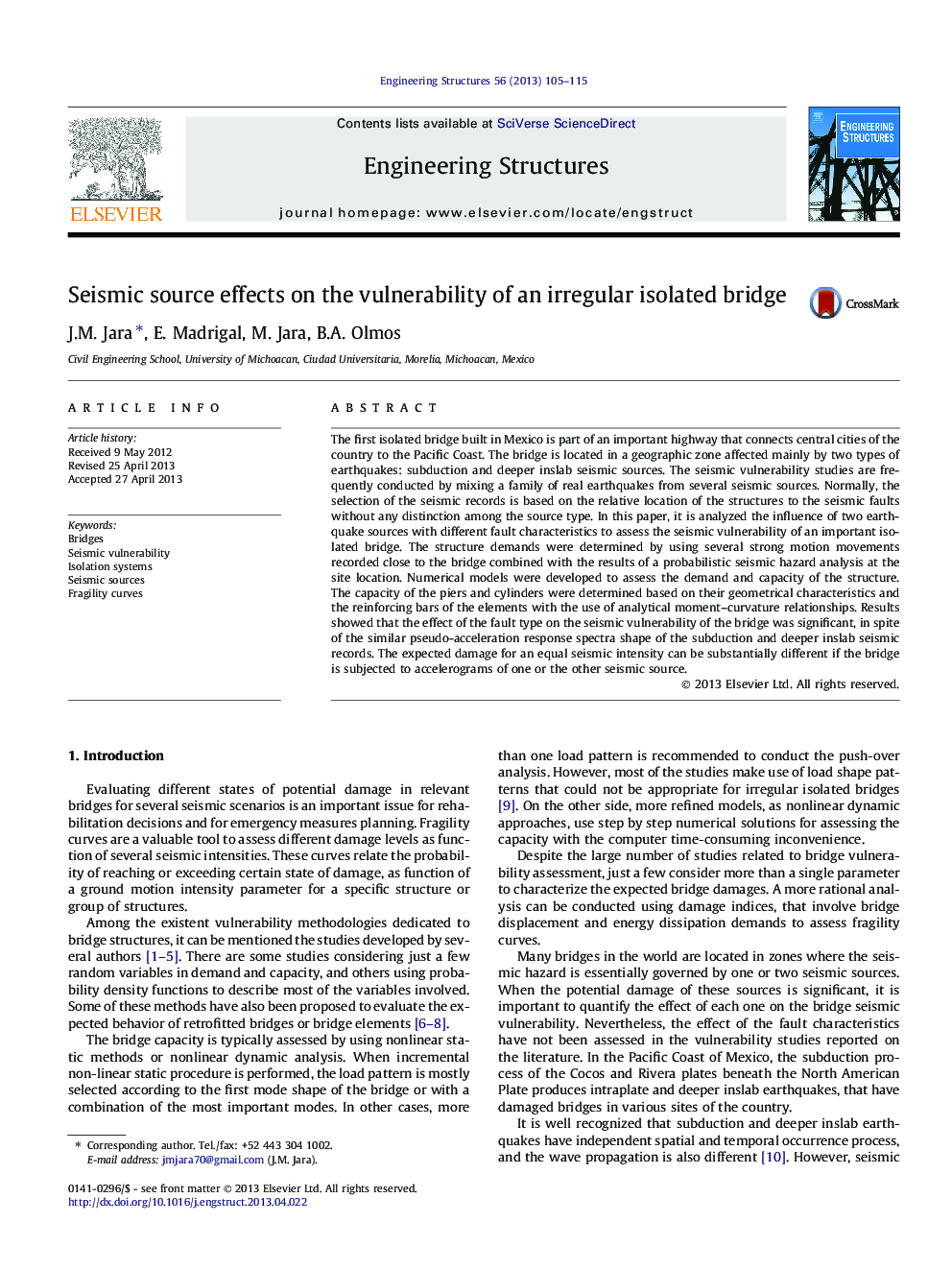| Article ID | Journal | Published Year | Pages | File Type |
|---|---|---|---|---|
| 6741251 | Engineering Structures | 2013 | 11 Pages |
Abstract
The first isolated bridge built in Mexico is part of an important highway that connects central cities of the country to the Pacific Coast. The bridge is located in a geographic zone affected mainly by two types of earthquakes: subduction and deeper inslab seismic sources. The seismic vulnerability studies are frequently conducted by mixing a family of real earthquakes from several seismic sources. Normally, the selection of the seismic records is based on the relative location of the structures to the seismic faults without any distinction among the source type. In this paper, it is analyzed the influence of two earthquake sources with different fault characteristics to assess the seismic vulnerability of an important isolated bridge. The structure demands were determined by using several strong motion movements recorded close to the bridge combined with the results of a probabilistic seismic hazard analysis at the site location. Numerical models were developed to assess the demand and capacity of the structure. The capacity of the piers and cylinders were determined based on their geometrical characteristics and the reinforcing bars of the elements with the use of analytical moment-curvature relationships. Results showed that the effect of the fault type on the seismic vulnerability of the bridge was significant, in spite of the similar pseudo-acceleration response spectra shape of the subduction and deeper inslab seismic records. The expected damage for an equal seismic intensity can be substantially different if the bridge is subjected to accelerograms of one or the other seismic source.
Related Topics
Physical Sciences and Engineering
Earth and Planetary Sciences
Geotechnical Engineering and Engineering Geology
Authors
J.M. Jara, E. Madrigal, M. Jara, B.A. Olmos,
